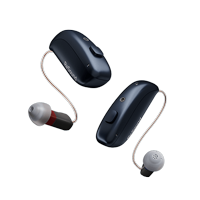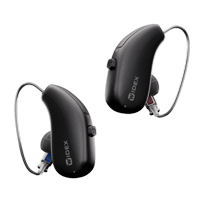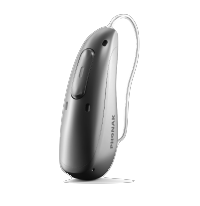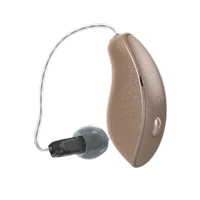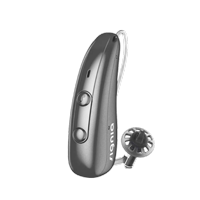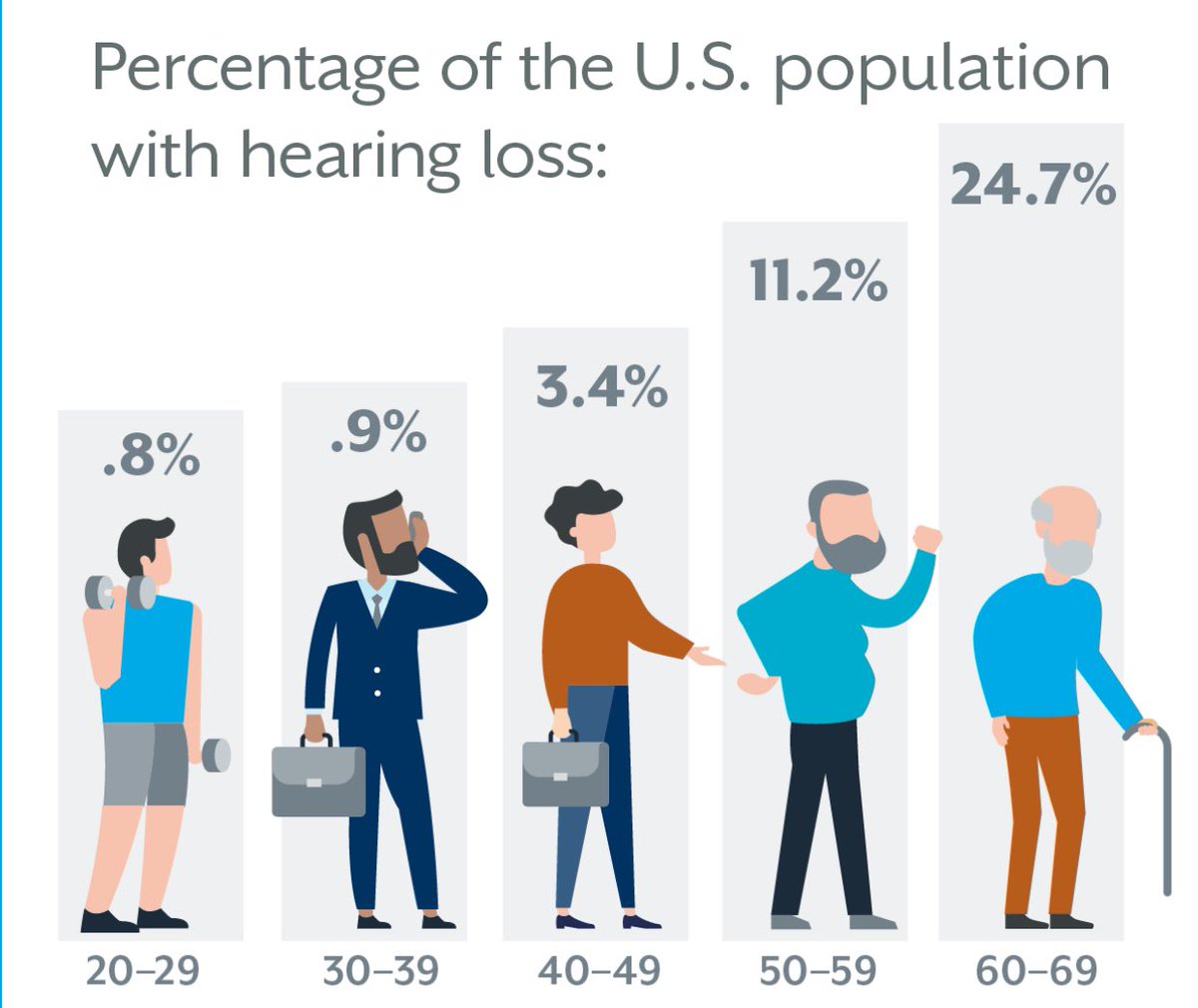Age-related hearing loss (ARHL) affects millions of seniors worldwide, leading to communication difficulties, social isolation, and increased risk of cognitive decline. A groundbreaking new study published in 2025 reveals promising evidence that senolytic drugs may help delay the progression of this common condition.
Key Takeaway: Researchers have demonstrated that senolytic drugs (dasatinib and quercetin) can significantly delay age-related hearing loss in mice by targeting and clearing senescent cells in the cochlea. This research represents the first evidence of a potential pharmacological intervention that could slow ARHL progression, offering hope for millions of people affected by this condition.
Disclaimer
The information provided on this page is for general informational purposes only and is not intended as medical advice. The research discussed is based on animal studies and has not yet been tested in humans.
We recommend consulting with a qualified hearing healthcare professional for any hearing-related concerns or treatment options.
From David Sinclair’s Feed
NEW STUDY: Senolytic molecules that clear aged cells (like dasatinib + quercetin), slow age-related hearing loss in mice by protecting cochlear cells & reducing inflammation.
The study showed the combo of senolytics (D+Q) preserved hearing in mice by targeting old, senescent cells in the cochlea, which secrete inflammatory molecules that affect normal tissue function
Clinical trials with D+Q have been in progress at the Mayo Clinic. Typically it’s 100mg dasatinib (a cancer drug) and 1000mg of quercetin (a supplement). 3 consecutive days once monthly or weekly
Often ignored by the senolytic field is the fact that quercetin activates SIRT1, a longevity/survival enzyme and this could also help explain the results (see Howitz et al Nature 2003)
David A. Sinclair, AO, PhD is a tenured Professor of Genetics at Harvard Medical School. His Information Theory of Aging (ITOA) proposes that aging and diseases of aging are driven by informational noise and there is a backup copy of youthful information in every cell that can be accessed to reverse aging. His book Lifespan:Why We Age and Why We Don’t Have To is an international and New York Times best selleris a leading source of information About longevity science.
Understanding Age-Related Hearing Loss
Before diving into the breakthrough research, it’s important to understand what age-related hearing loss is and how it affects the body:
ARHL is one of the most prevalent types of sensory disabilities in older individuals globally. It affects a significant percentage of adults over 65 years old.
Beyond hearing difficulties, ARHL increases the risk of developing multiple neurodegenerative and neuropsychiatric disorders, including dementia, Alzheimer’s disease, and depression.
ARHL is characterized by three main pathological changes: loss of sensory hair cells, atrophy of the stria vascularis, and compromised integrity of spiral ganglion neurons.
Despite its prevalence, there are currently no FDA-approved treatments specifically designed to prevent or treat the underlying causes of ARHL.
The Role of Cellular Senescence in Hearing Loss
The new research focuses on the role of cellular senescence in age-related hearing loss. But what exactly is cellular senescence?
Senescent cells are a specific class of cells that undergo permanent cell cycle arrest and display many phenotypic changes after exposure to various stressors. These cells resist normal cell death (apoptosis) by upregulating anti-apoptotic proteins, leading to their accumulation in tissues and organs as we age.
Most importantly, senescent cells release an array of inflammatory molecules and other factors collectively known as the senescence-associated secretory phenotype (SASP). This SASP can trigger senescence in neighboring healthy cells, creating a cascade effect that contributes to tissue aging and degeneration.
Why Senescent Cells Matter
Senescent cells have been implicated in numerous age-related conditions, including:
- Cardiovascular disorders
- Diabetes mellitus
- Renal dysfunction
- Idiopathic pulmonary fibrosis
- Neurodegenerative diseases
The accumulation of these cells in the cochlea with age suggests they may also play a significant role in hearing loss.
Breakthrough Research Findings
The study, published in 2025 by researchers from Sun Yat-Sen Memorial Hospital in China, used a combination of the senolytic drugs dasatinib and quercetin (D+Q) to target senescent cells in the cochlea of mice. Here’s what they discovered:
| Finding | Implications |
|---|---|
| D+Q treatment at an early stage of ARHL significantly delayed ARHL progression | Early intervention with senolytics may prevent or slow hearing loss development |
| Treatment alleviated age-related hair cell loss and stria vascularis atrophy | Senolytics protect crucial cochlear structures needed for normal hearing |
| Benefits observed in both male and female mice | Treatment may be effective regardless of sex |
| Treatment of mice with normal hearing mitigated age-related hair cell loss | Potential preventive benefit even before hearing loss begins |
| D+Q treatment alleviated the senescence-associated secretory phenotype (SASP) | Reduction in inflammatory signaling may protect cochlear cells |
| Transcriptomic analysis showed downregulation of inflammatory cytokines and chemokines | Anti-inflammatory mechanism appears central to protective effects |
| Mechanistically, D+Q treatment inhibited NF-κB activity | Specific molecular pathway identified as target for intervention |
How Senolytic Drugs Work Against Hearing Loss
The research points to several key mechanisms by which senolytic drugs help prevent age-related hearing loss:
Senolytics selectively eliminate senescent cells that accumulate in the cochlea with age, preventing their harmful effects on surrounding healthy cells.
By removing senescent cells, treatment reduces the inflammatory environment in the cochlea that contributes to cell damage and death.
Senolytic treatment helps preserve the sensory hair cells in the cochlea that are essential for converting sound vibrations into neural signals.
The treatment reduces atrophy of the stria vascularis, a structure in the cochlea that maintains the proper ionic composition needed for hearing function.
What This Means for Hearing Health
While this research is still in its early stages and based on animal studies, it represents a significant step forward in our understanding of age-related hearing loss and potential interventions. Here’s what it could mean for the future:
- First pharmacological intervention: This study suggests the possibility of the first medication specifically targeting the underlying mechanisms of ARHL, rather than just managing symptoms.
- Preventive approach: The findings indicate that early intervention with senolytics could potentially prevent or delay the onset of age-related hearing loss.
- Broader applications: Since similar cellular mechanisms are involved in other age-related conditions, this research may have implications beyond hearing health.
- Complementary to existing options: Future senolytic treatments could complement current hearing interventions like hearing aids and cochlear implants.
Understanding the Senolytic Drugs Used in the Study
The research utilized a specific combination of two senolytic drugs:
A pan-tyrosine kinase inhibitor originally developed as a cancer treatment. It targets specific pathways that allow senescent cells to resist cell death.
A natural polyphenolic flavonoid found in many fruits and vegetables. It has antioxidant and anti-inflammatory properties that complement dasatinib’s effects.
The combination of dasatinib and quercetin (D+Q) has been studied in other age-related conditions, with previous research showing its potential to clear senescent cells, attenuate age-related pathologies, and even extend lifespan in animal models.
Practical Implications and Future Research
While senolytic treatment for hearing loss is not yet available for human use, this research opens several important avenues for future investigation:
- Human clinical trials: The next step would be to determine if similar benefits occur in humans and establish safety profiles.
- Optimal timing: Research will need to identify the best time to initiate treatment for maximum benefit.
- Dosing protocols: Finding the ideal dosage and treatment schedule will be crucial.
- Combination therapies: Investigating how senolytics might work with other interventions could maximize outcomes.
- Biomarkers: Developing tests to identify individuals who might benefit most from treatment.
Important Note on Quercetin
While quercetin is available as a dietary supplement, the research used specific pharmaceutical formulations and dosages in combination with dasatinib. Self-medicating with over-the-counter supplements is not recommended and may not provide the same effects seen in the controlled research setting.
Protecting Your Hearing Today
While we await further developments in senolytic treatments for hearing loss, there are steps you can take now to protect your hearing health:
Use appropriate hearing protection in loud environments. Noise-induced damage can compound age-related changes.
Get your hearing evaluated regularly, especially after age 50, to catch changes early.
Don’t wait to address hearing loss. Modern hearing aids come in a range of price points and technologies to suit different needs.
Maintain cardiovascular health through exercise and diet—good blood flow is essential for cochlear health.
Turning Life up Through Better Hearing
For over 30 years, California Hearing Center has been helping people improve their lives through better hearing. Whether you are having a conversation with your family, enjoying a meal at a restaurant, meeting with people at work, out shopping with friends, or taking a walk in the park, hearing well is an essential part in turning up the enjoyment of life.
Or call us at (650) 342-9449
FAQs About Senolytic Treatment for Hearing Loss
No, senolytic treatment specifically for hearing loss is not yet available for human use. The research discussed in this article was conducted in mice and represents an early stage of investigation. Human clinical trials would be necessary before such treatments could become available.
While quercetin is available as a dietary supplement, the research used a specific combination of quercetin with dasatinib in precise pharmaceutical formulations. There is currently no evidence that taking quercetin supplements alone would have the same effect on hearing loss. Always consult with a healthcare provider before starting any supplement regimen.
Current treatments for age-related hearing loss, such as hearing aids and cochlear implants, focus on managing symptoms rather than addressing underlying causes. Senolytic treatments would take a different approach by targeting one of the fundamental biological mechanisms of age-related hearing loss. In the future, these approaches might be used together—senolytic drugs to slow progression and hearing devices to address existing hearing loss.
Research has shown promising results for senolytic treatments in various age-related conditions, including cardiovascular disease, diabetes, pulmonary fibrosis, and neurodegenerative disorders. The common thread is that all these conditions involve increased numbers of senescent cells contributing to tissue dysfunction.
References
- Chen Y, Huang H, Luo Y, et al. (2025). Senolytic treatment alleviates cochlear senescence and delays age-related hearing loss in C57BL/6J mice. Phytomedicine, 156772. https://doi.org/10.1016/j.phymed.2025.156772
- Bowl MR, Dawson SJ. (2019). Age-related hearing loss. Cold Spring Harbor Perspectives in Medicine, 9(8), a033217. https://doi.org/10.1101/cshperspect.a033217
- Gorgoulis V, Adams PD, Alimonti A, et al. (2019). Cellular Senescence: Defining a Path Forward. Cell, 179(4), 813-827. https://doi.org/10.1016/j.cell.2019.10.005
- Hickson LJ, Langhi Prata LGP, Bobart SA, et al. (2019). Senolytics decrease senescent cells in humans: Preliminary report from a clinical trial of Dasatinib plus Quercetin in individuals with diabetic kidney disease. EBioMedicine, 47, 446-456. https://doi.org/10.1016/j.ebiom.2019.08.069
- Zhu Y, Tchkonia T, Pirtskhalava T, et al. (2015). The Achilles’ heel of senescent cells: from transcriptome to senolytic drugs. Aging Cell, 14(4), 644-658. https://doi.org/10.1111/acel.12344
- Livingston G, Sommerlad A, Orgeta V, et al. (2017). Dementia prevention, intervention, and care. The Lancet, 390(10113), 2673-2734. https://doi.org/10.1016/S0140-6736(17)31363-6
Keywords: age-related hearing loss, senolytic treatment, cellular senescence, dasatinib, quercetin, cochlear degeneration, hearing loss prevention, hearing research, senescence-associated secretory phenotype, hearing health



